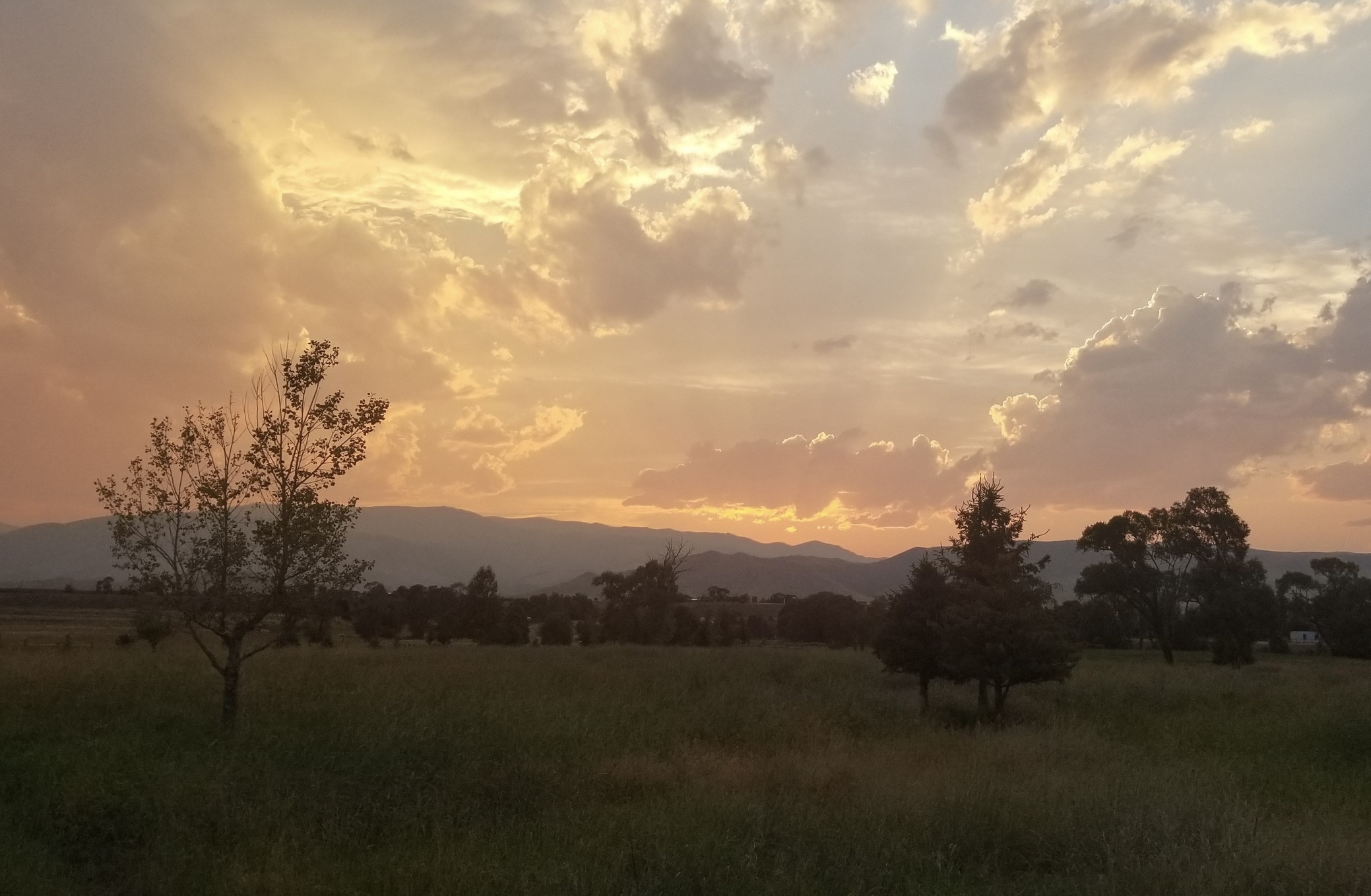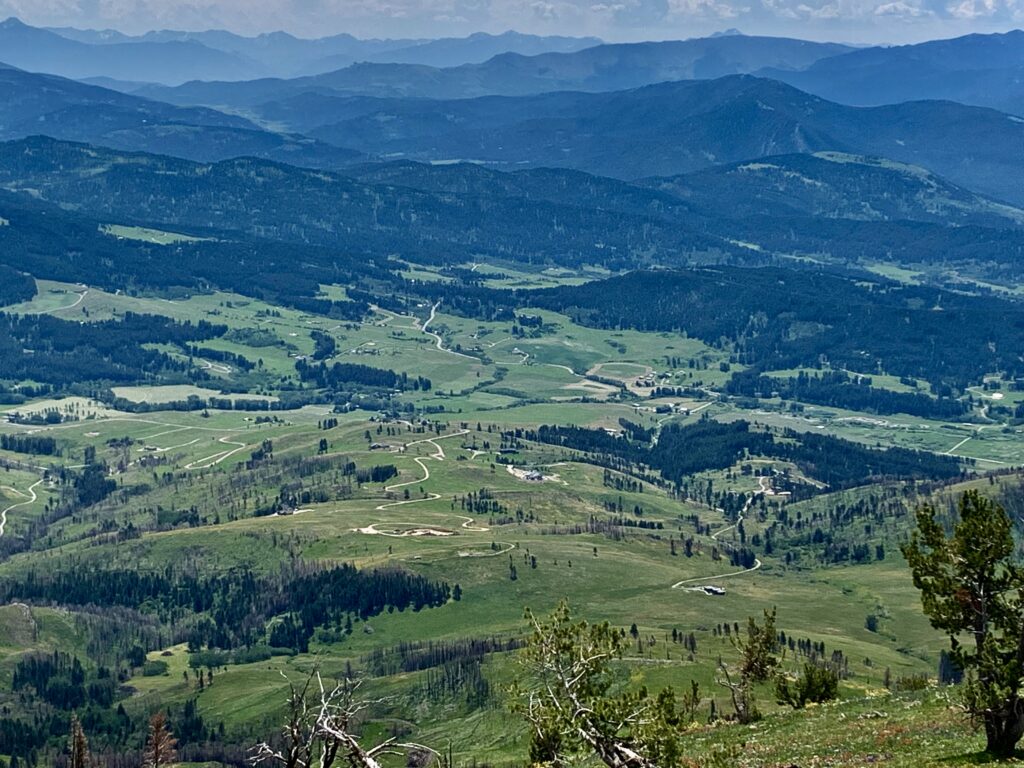by Todd Wilkinson
Scott McMillion, once a traditional newspaper reporter, and I have known each other for a long while and our rendezvous (plural) at the intersection of stories go back decades. I will never forget when we locked eyes in a mutual look of recognition—and holy-shit astonishment—upon converging at a bank of pay phone booths outside of the Old Faithful Inn on September 7, 1988.
We were calling in what we had just witnessed.
That was the day gale force winds blew in from the west, firing up the North Fork Forest Fire like a supercharged, roaring rocket engine, sending it bearing down on Yellowstone’s most notable developed area which earlier in the morning had been evacuated. Amid thick woodsmoke and zero visibility, we temporarily repaired to the sinter rim of Old Faithful Geyser, only able to see the Stars and Stripes being whipsawed above the Inn as a fire crew tried to cover the roof with water and foaming the walls of other structures. A change of direction in the wind is what spared the historic hotel.
We carried quarters in our pocket because a lot of stories were called in, read aloud from scribbled notes to editors and rewrite people back in newsrooms. It was the best kind of training for “living closer to stories,” thinking on your feet, being well prepared before you arrive on a scene, and then able to distill the essence.

We also jumped into a tiny plane together and took a turbulent aerial tour of the proposed New World Mine north of Cooke City in the Absarokas, to survey the site of a massive gold mine that would have represented a high-risk threat to the ecological integrity of Yellowstone Park. Side by side, working for different news outlets (kids: this was before there were cell phones, functional portable lap tops, and instant Google-enabled “research”), we competed and fraternized on every kind of conservation issue affecting the northern half of Greater Yellowstone. Those times, in hindsight, we both agree now, seem quaint.
Readers, however, were less distracted and society not hobbled by chronic attention deficit disorder. Information didn’t have to be dispensed in overly-simplified, bite-sized chunks because, guess what, people liked to read. And they actually knew how to write letters, on paper, in cursive, using their hands and those crude implements known as pens and pencils. There was an art and poetry found in words so lacking in today’s faux-haiku texted communication. Yellowstonian and Montana Quarterly salute people who can read and write their own thoughts and not slackerishly turn wordsmithing or mental absorption of facts over to the idiocy of AI.
Somehow, there was also more sensitivity, and less complacency, in thinking about civic duty beyond elected office; that includes not allowing beloved places to slip away so easily. There was less, well, solipsism.
Scott lives in his boyhood home of Livingston, Montana, a town along the Yellowstone River where local denizens take pride in knowing each other. Today, the frantic feeling in many corners of the Northern Rockies is kind of like that day McMillion and I had together at Old Faithful in 1988; they’re bracing against a storm—this one a hurricane of development pressure bringing permanent change.
I like to support the work of pals, and here I want to encourage Yellowstonian readers who value our content to buy a subscription in Scott’s excellent magazine, Montana Quarterly. Based in Livingston, it is focused on the entire state, which is to say it captures the culture of the Northern Rockies and High Plains, meaning the same kinds of characters in Montana exist in Wyoming and Idaho.
The stories in this remnant folksy print publication will resonate. Montana Quarterly makes for fine reading in front of the fireplace and having it on your coffee table, whether in the West or wherever you call home, is an indication to friends that you are smart. In fact, don’t buy one subscription for you; give your friends a gift subscription. Enjoy the interview below with Scott, who even offers a recipe for what he calls “High Plains Sashimi.”

A Chat With Scott McMillion
Todd Wilkinson: Montana Quarterly delivers the less-obvious stories that often escape what remains of the print media and their rapid-fire here-today, gone-tomorrow news cycles. Why do those profiles of people and place that you deliver matter?
Scott McMillion: We try to focus on the lasting, rather than the ephemeral, the people and trends that are helping to improve things, or at least keep them from getting worse. They are what Wallace Stegner called the stickers, as opposed to the boomers.
The daily press does what it can to cover events as they unfold. I did that work for decades and I respect those who still do, though so many of them have been deprived of budgets, time to think, even a living wage.
As the editor of a quarterly magazine, I’ve learned not to chase breaking news. I want to focus on perspective. One good example is a story Al Kesselheim did about the restoration of Silver Bow Creek, famously polluted by the Butte mines. Copper King William Clark built a Fifth Avenue mansion in New York City with the financial spoils of those mines, leaving the chemical spoils behind for the rest of us. A bunch of people worked hard for a long time to return that stream to something resembling function, a place where a kid can wade without melting his shoes, where a few fish survive.
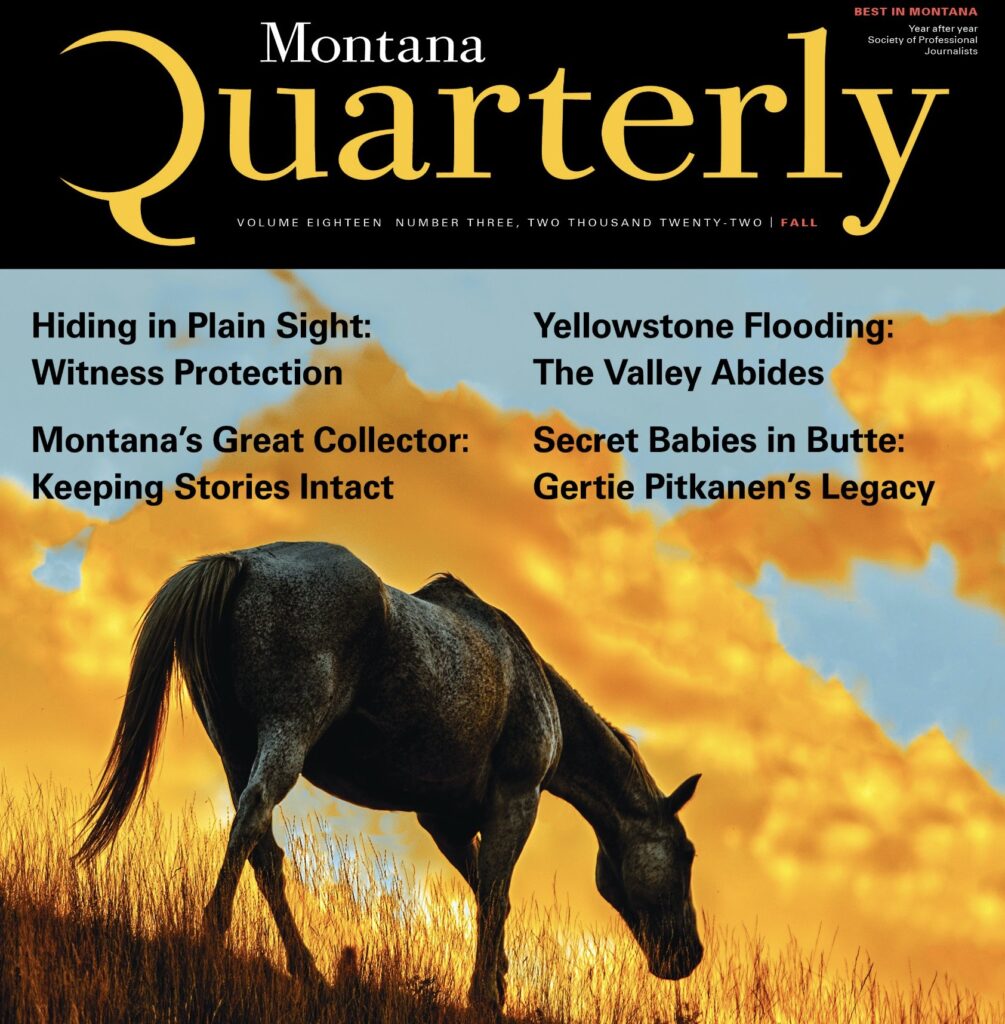
The people who did that work are the stickers, no matter where they came from. Those stories matter.
TW: Geographically, Montana is two states. It has the frenetic western mountain valleys that give “Montana” its name; many, however, rapidly filling up with urban newcomers from elsewhere. And then there are the vast treeless expanses, some still continuing to empty out, which is incredibly painful to the people who live there. What useful wisdom could dwellers from the windswept prairie bestow on the recent arrivals who are transforming places like the Gallatin, Bitterroot and Flathead valleys? And what advice might old timers in the western part of the state bestow upon those who feel forgotten?
McMILLION: It causes me a lot of anguish to see these scenic valleys chopped up and consumed like holiday leftovers. Our lifestyle, our environment, our wildlife is being consumed one backhoe scoop at a time and I wish I knew how to hit the brakes. Few county governments have the tools or the political will to do much about it so I don’t see it slowing down any time soon. Montana is on a lot more radar screens these days, thanks partly to stupid shows like Yellowstone. (And no, Kevin Costner is not the governor of Montana.)
And there’s just so much money involved. I used to say that nobody comes to Montana for the money. I don’t say that any more.
Rural folks east of the divide don’t live among the traffic and vast apartment complexes you find around Bozeman or Missoula, but they hear about it and they see it when they visit. Rising real estate prices – and resultant property taxes – are rippling across the state and that’s probably causing some mixed emotions, depending on if you’re selling or trying to buy. And more people from western Montana are heading east to recreate, particularly to hunt. Advice from that area? I think it would be simple: mind your business, show some respect. Close the gates behind you if you’re allowed to hunt. If you’re not allowed, don’t bitch. We’ve kept it attractive enough for you to come visit so don’t come out here and tell us what to do.
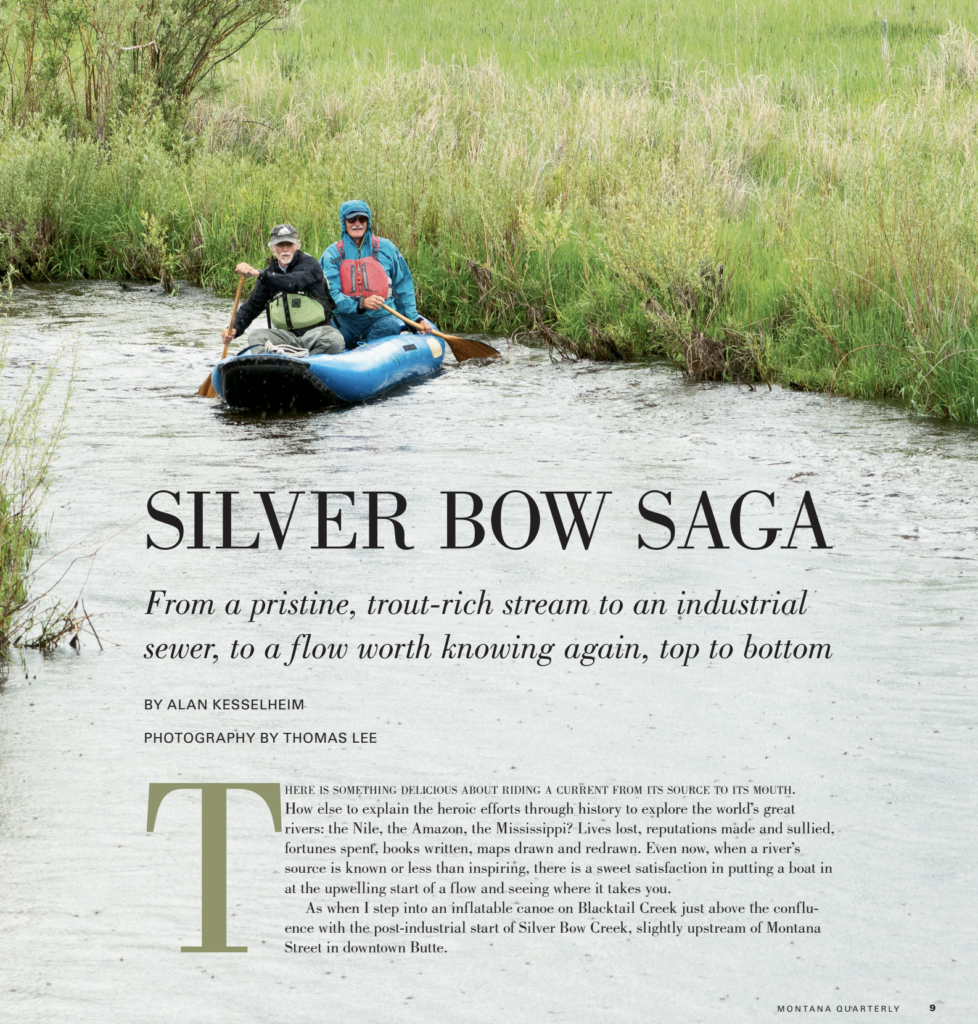
The corporate marketers of luxury leisure options have western Montana in the crosshairs. I suspect central and eastern Montana are also in the scope, downfield but in range.
Advice from old timers to the forgotten? Well, a lot of them are feeling like they’re the forgotten ones, wondering whether they can pay the property taxes and still afford snow tires.
TW: You purchased Montana Quarterly at a time of huge disorder happening in the magazine space which has only gotten more challenging, particularly as young readers don’t often subscribe to print newspapers and get their information digitally in snippets and vacuous superficial messaging on TikTok (can you tell I’m skeptical about TikTok!?). You moved the magazine operation to Livingston and surrounded yourself with good folks in putting MQ together. What’s been most satisfying about not only your persistence, but that you have subscribers who value storytelling presented in tactile form that one can hold in the hands?
McMILLION: In hindsight, I don’t think I would have bought the magazine if I had known how much I didn’t know. But I’ve learned a lot over the years. One thing is that a magazine needs to be crafted. You can’t just put a Word document on paper. It’s a product for the mind, but also for the eye and the fingertips. It has to feel good in your hands. This means you have to pay attention to design and layout and paper quality and prices, which means a pulp mill strike in Finland can cost me some sleep. My designer, the polymath Craig Lancaster, is critical to all this. So is my business manager Robin Ogata. Megan Regnerus and Sabrina Crewe correct my grammatical errors and sloppy thinking.
I doubt that I’ll ever reach many folks in the TikTok crowd. Been to an airport or a dentist’s office lately? Everybody is staring at their phone while they wait. I’m guilty of this, too, but I’m not looking at TikTok. People read magazines at home, when they have time to pay attention and aren’t just killing time.
Most of my readers are 40 or older and one of my pleasures is talking to them. (Most of the time). I’m usually the only one in the office so when somebody calls to renew a subscription, it’s often a chance to talk, to kick some dirt in the barnyard, so to speak, and play a round of who-do-ya-know? I often find some sort of personal connection, and I’ve made friends from California to Buffalo, New York. They’re all people who care about Montana, or they wouldn’t be subscribing. So we start off with that in common.
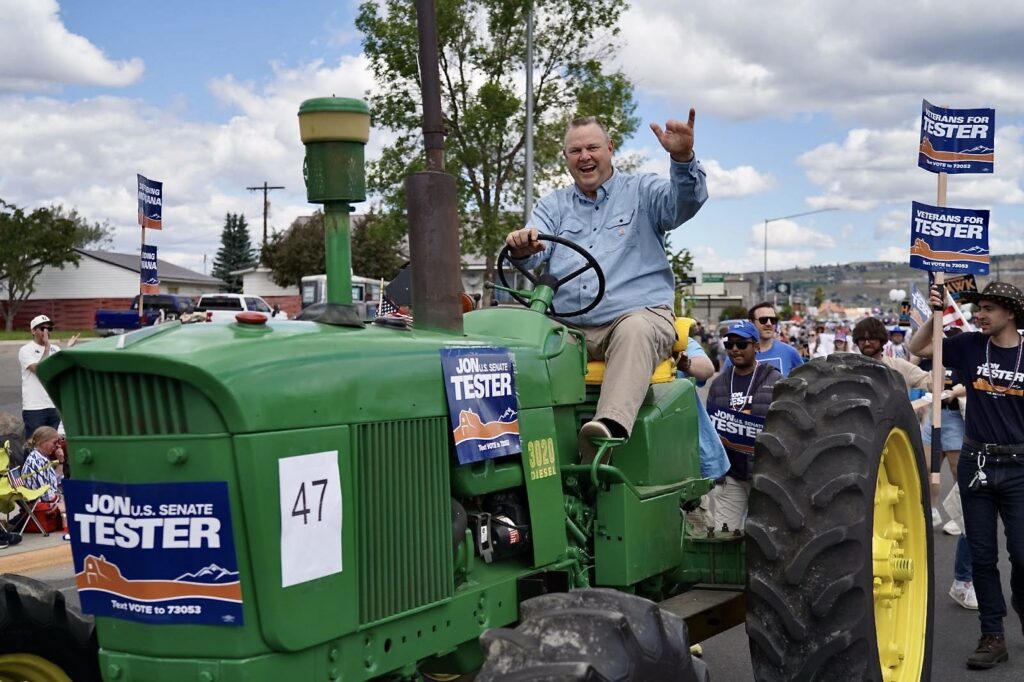
TW: This question is not meant to be political, as in a party sense, but relating to deeper symbolism. What does it say when a salt-of-the-earth dirt farmer like Democrat incumbent US Senator Jon Tester, who would be considered a person of the radical middle in most any state, would go down in defeat?
McMILLION: Tester’s loss came mostly as a result of national politics. He was an old-school politician who’d been around long enough that he could go almost any place in Montana and say, “You see that (insert your preference: highway or interchange or irrigation canal) over there. I helped you get it.”
He said early in the campaign that the Republicans would turn him into something he wasn’t, and then run against that guy. And that’s what happened. It didn’t help him that national Democrats pooh-poohed fears about the border, the price of bacon and eggs, the cost of housing, so that’s what his opponents ran against. They blamed him for immigration fears and excessive wokeness. He busted his ass for veterans and they claimed he didn’t.
Democrats, including Tester, ran hard in support of abortion rights this year. In Montana, voters strongly endorsed enshrining those rights in the state constitution. But they also voted Republican across the board. That’s telling. It says that Montanans want their personal liberties, but a majority of them don’t like the Democratic Party.
I think Tester was done in by the policies and priorities his own party, or at least by the way those policies and priorities are perceived. Democrats had stats and graphs and data and facts. Tim Sheehy got the votes.
TW: For a long time, Montanans have lived in denial about the change coming here. Bozeman/Gallatin was forever a relatively quiet university town and MSU’s College of Ag, which was churning out generations of future ranchers and farmers, was the big one on campus. Today, Bozeman is the poster child for how not to handle growth and spillover effects are radiating in every direction, bearing down on sweet Park County. You wrote about the Yellowstone Club for the Bozeman Daily Chronicle. Do you think Park County, which extends from the Shields Valley to the front doorstep of Yellowstone Park, is ready for what’s coming? Please elaborate.
McMILLION: I don’t think Park County is in any way ready for the development that’s headed our way. Like I said, the luxury recreation industry has Park County in the crosshairs. When Under Canvas, a hedge fund-owned outfit, decided to set up a hundred or so wall tents on the banks of the Yellowstone River, their corporate communications declared Park County to be an “underserved” market. All they needed were sewer and electrical permits. And there it stands. A profitable eyesore on an eroding riverbank. (More riprap on the way, I predict).
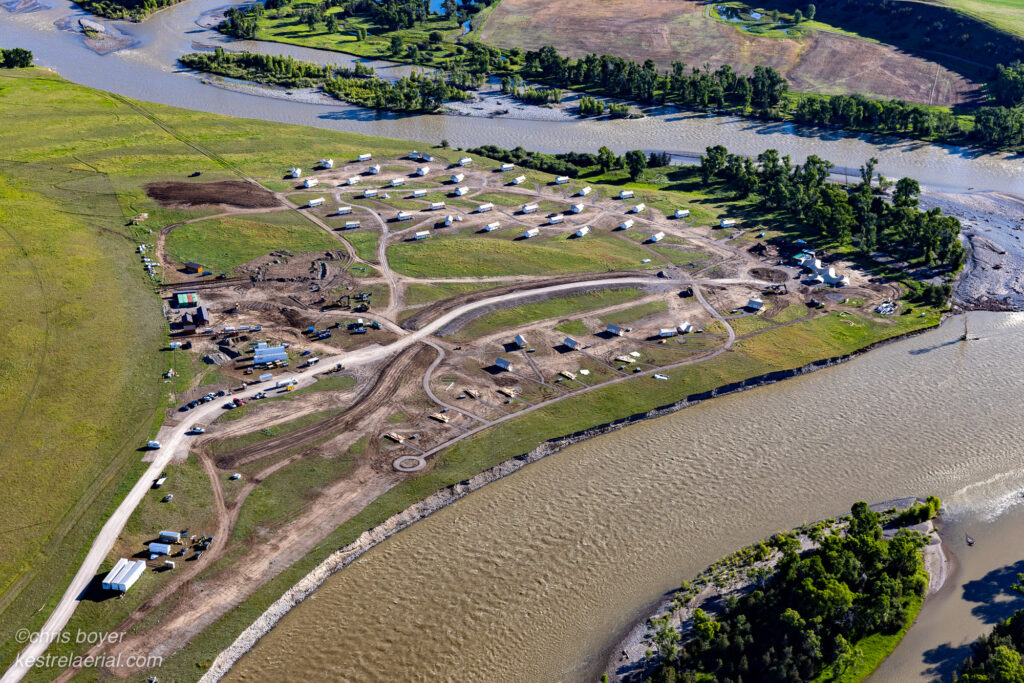
In the Crazy Mountains, the same outfit that runs The Yellowstone Club at Big Sky is building a luxury golf resort. (Their property in Whitefish charges $250,000 for a membership.) The neighbors are already gearing up for a court battle over water rights. While the club makes pleasant noises about being good neighbors, if the money changers in Boston don’t feel like they’re getting an adequate return, they’ll find a way to do so.
Sage Lodge has built employee housing in elk winter range.
Chico Hot Springs has new owners and a lot of vacant land. They haven’t changed much yet, but I worry about their plans.
Hunters Hot Springs, on the county’s east boundary, is being rebuilt with a luxury hotel and God knows what else in the works.
This has all happened in the past couple years and Park County has very few tools to deal with it. I fear a future of even higher housing costs, more temporary workers with no place to stay, big impacts on schools and roads and trails and rivers. We’re a working county now. It can be tough, but most folks get by. We’ll become a resort economy if nothing changes. Things will get tougher.
TW: I’ve known you too long to know you’re not going to self-congratulate yourself, so I say, well done, my friend, truly. And I also know that although you’re a guy of many talents, you’re not cut out to be a song-and-dance pitchman for the magazine, so I say readers really ought to subscribe because what you’re contributing to— our common sense of home-grown identity—is real. A subscription is a gift with substance for a whole year. In parting, however, I want something from you that I can share with Yellowstonian readers, and that is one of your best recipes for cooking big game, please.
McMILLION: I don’t hunt as much as I used to. It seems that, as I age, I just don’t have that much kill left in me. But I do like to putz around in the kitchen and every year, my friend, Parks Reece, and I auction off a charity wild game dinner with about six courses and maybe a token vegetable.
We usually start with this one and it’s always a big hit.
Big Game Recipe from Scott and Parks: High Plains Sashimi with a Wasabi Wash
One tenderloin from an elk or a large deer, or two from a smaller deer or an antelope.
Clean it thoroughly and remove all tendons and silver skin, then cut it into ¾-inch cubes.
In a small bowl, slowly add drops of cold water to a spoonful of wasabi powder, mushing it together until you have a pasty orb about the size of a ping-pong ball. (Or you can use Wasabi in a tube.) Add two or three tablespoons of good quality soy sauce to the bowl and use a spoon or chopsticks to blend it with the wasabi paste.
Meanwhile, heat a cast iron pan, then cover the bottom of it with some neutral oil, such as canola. When the oil begins to shimmer, add the meat, a few pieces at a time. Keep tongs or a spatula handy and sear the meat for maybe five or six seconds on two sides.
You want the meat to have a sear on the outside but remain very rare, even a little cool, in the middle.
Let the meat drain on a paper towel or a rack for a few more seconds, then dip the morsels into the wash, using toothpicks or chopsticks or your fingers. The dip is pungent, so dive carefully.
This will give a few bites each to about six people.

